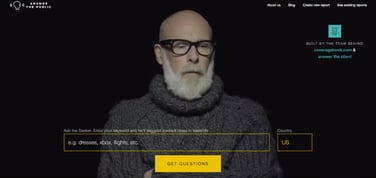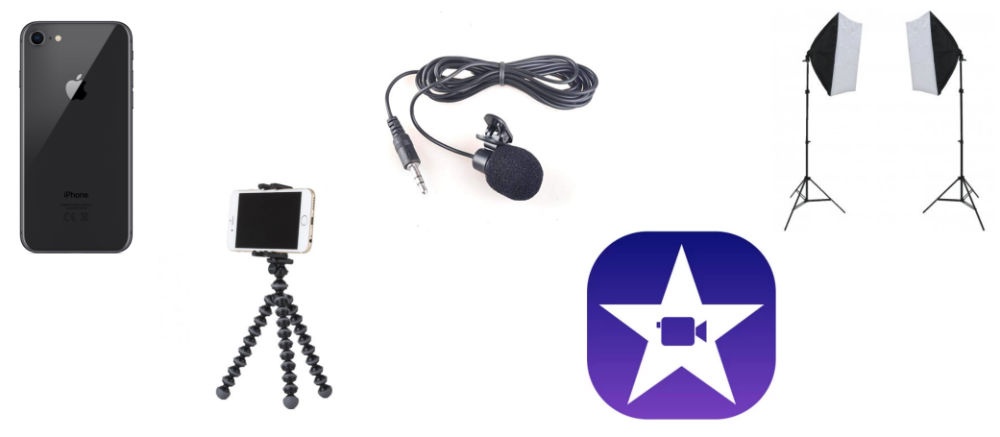Video is one of the most powerful forms of media when it comes to engaging people. A well-made video can be eye catching, entertaining and informative. One of the standout advantages of video is the ability to present a large amount of information to the viewer quickly in a far more engaging way than having them read an article.
The Power of Video
There is no platform that showcases the power of video better than YouTube. Some of the statistics for this video upload platform are incredible:
- Over 300 hours of video are uploaded to YouTube every minute
- Nearly 5 billions videos are watched on YouTube every day

These statistics show the current popularity of video and proves that there are certainly a number of willing consumers for video-based content. With so much interaction occurring on YouTube it is important that your business has a YouTube channel, is posting videos regularly and is taking the time to review the engagement those videos received.
YouTube is officially the 2nd largest search engine after Google. This is quite incredible for a platform that was designed for video upload, not to be a search engine. If you want to reach potential customers for your products and/or services, then YouTube is a very important platform.
The Importance of Video Marketing
81% of businesses currently use video as a marketing tool. It is predicted that 65% of businesses that are not currently using video say they plan to start in 2019. These statistics confirm that a number of businesses use video and those that don’t plan to in the future. Just think of the consequences if your business chooses to ignore video, but your competitors are creating video and receiving the engagement.
It is important to think about where you are investing your time when it comes to web content creation. 80% of people would rather watch video from a brand than read a blog, which suggests that it is more worthwhile investing time in creating video content.
If you fail to take video as a form of web content seriously, then your business will lose out to competitors that are using video as part of their digital marketing strategy.
Help People with Video
Video assists both users and marketers. It helps:
- Increase understanding of a product or service
- Increase sales
- Reduce support queries
- Increase traffic
- Increase time on website
Video is a highly effective way to display information and people really can be convinced to buy a product or service.
The 4 Types of Video You Need to Make
- How to video – YouTube deals with thousands of ‘how to’ search queries every day. Creating this these types of videos gives you more authority
- FAQ Videos – Answering the questions people are asking about your business in a video can improve sales by helping to educate your customers.
- Products & Services – Embed product and service explainer videos on your website. People will engage with the video and spend longer on the page. The amount of time spent on a page is now a ranking factor in Google, so it is worthwhile taking steps to encourage people to spend more time on your pages.
- Introduction to the business – Create a short video on your story and what you do. This can be embedded on the home page and about sections of your website. This can be a really good way to let visitors to your website know how you can help them and what your business is the best fit for.
Coming up with Video Ideas
Listen to your customers. This can be a great way to come up with ideas for video content. The likelihood is that if one person is asking a question about your business a number of others will be too, but they probably just can’t be bothered to contact you. You should make it as easy as possible for people to find information about your business.
If you are still struggling for ideas, then take a look at the free tool AnswerThePublic. Simply enter the keywords into the search box and click ‘Get Questions’ and it will generate a number of content ideas based on what people are searching. Look at the queries and decide on a few you can create videos for. It is then a good idea to go to YouTube and type the search query in and see what the competition looks like for that query.
If there are a number of good videos answering that search query, then creating a video for that query may not be the best use of time due to the competition. Instead look for queries where the results are not very good as this presents the best opportunity for your video to rank well in the YouTube results.

When you consider that YouTube is the 2nd largest search engine, ranking in YouTube is certainly very beneficial.
How to Create a Great Video
There are a number of simple steps that can be followed to create a high quality video.
Preparation & Introductions
Be prepared. It is a good idea to prepare a script, so you know what you are going to say and then rehearse it. You only have the first few seconds of the video to grab people’s attention, so let’s take a look at two effective methods for starting your video to get people engaged.
APP Method
- Agree – Begin with a statement that the viewer can easily agree with. ‘I’m sure you would agree…’
- Promise – Explain that you have a solution and that there are brighter days ahead. ‘What if I could help you’
- Preview – Elaborate on how you intend to communicate the solution. ‘I’m going to solve this for you’
Bridge Method
- Desired Situation – Let the audience picture where they want to be. Imagine you never have to worry about x again’
- Current Situation – Explain where they might be right now. ‘But right now x is concerning you.’
- Offer a Bridge – Elaborate on how you intend to communicate the solution. ‘In this video I’m going to show you/tell you…’
Framing & Lighting
- Head space - make sure there is not a lot of unnecessary empty space around your head and think about how close or how far away you stand from the camera. Stand off to the right or left if you want to put text at the side of the video.
- Lighting – make sure you have good lighting and are not in darkness. It is a good idea to place a light in front of you and on either side of you.
- Setting – Choose a quiet, tidy space so people focus on you and not your surroundings.
Equipment
You may be thinking that it costs a lot of money to get started with video content creation, but the truth is you don’t need to spend a lot of money to create a great video. You can get started with some very basic equipment.
Filming can be done on your mobile phone camera, a cheap microphone can be purchased for sound quality, lighting with 150W bulbs is very reasonably priced and any Mac users will know that video editing software comes for free in the form of iMovie. All the equipment below will help you get started.
Then as you get better and start to see the benefits of creating video content you can invest in more professional equipment.
Video Editing
When it comes to editing your video, it is important to consider that 85% of people watch Facebook videos without sound. People often engage with video in public places where having the sound on is not an option and this means that subtitles are an absolute must. Failing to add subtitles to your video could lead to people not viewing your video at all!
There are always issues with adding music to your videos due to copyright. Luckily YouTube has a large library of music that you can use in your videos, so you don’t have to worry about finding legal tracks.
Choose your preferred editing software and master it. Final Cut Pro X is a far more advanced version of iMovie for Mac users and will cost £299.99. Camtasia can be used on Mac and PC and will cost around £225. Adobe Premiere Pro is another great piece of software for video editing, with a cost of around £20 per month.
Learning to edit takes time, so you can outsource your video editing. As a general rule 1 minute of video takes 1 hour to edit. Keep this in mind when you get a quote back from a video editor. If you want a 5 minute video and they quote 5 hours of time, then this is about right. If they quote you 10 hours, then you are probably better off taking your business elsewhere!
Make Sure to Promote Your Video
After you’ve taken time to create your video make sure to promote it. YouTube and Facebook will be your main platforms for promotion. On YouTube people will often search for you with ‘how to’ queries. On Facebook you are able to target the exact demographic of people who you want to see your video through paid advertising.
LinkedIn is a platform that is seeing an increase in video uploads. LinkedIn videos are better for B2B. If your company is involved in B2B then uploading your videos to LinkedIn could be worthwhile.
You can also promote your video through email sends. Make sure to check how adding video to your email affects engagement.
Make Video Part of Your Digital Marketing
Video is only going to grow in importance, so make sure your business is making the most of it. Cisco predict that 80% of all content will be video by 2020. Facebook have gone even further, predicting that by 2020 all content on their platform will be video. These statistics alone show how important video is going to be in the future.
You do not need a large marketing budget to make great video content. You can start with simple explanation videos, describing what your products or services are or answer population questions you receive from your customers.
When you create the video remember to promote it across your social media channels and you can even embed the videos on your website if it is relevant to a particular page of your website.
Don’t wait. The time to get started with video is now!
Contact Video Marketing Experts
If you would like to find out more about using video as part of your digital marketing strategy, please contact the Innovation Visual team who will be happy to help.









